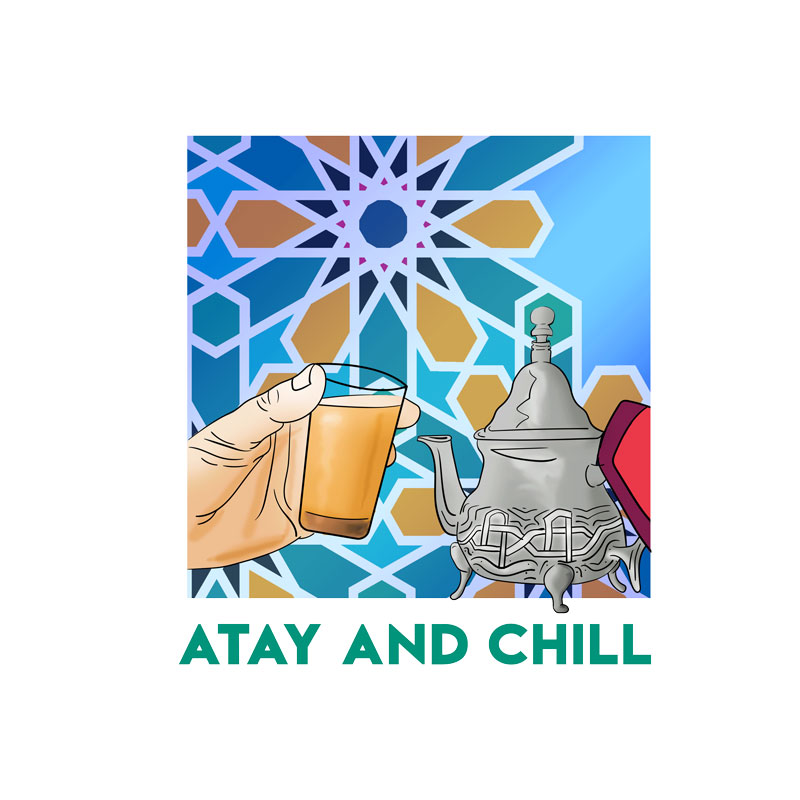
The Essence of Moroccan Tea: Moroccan tea illustration
Moroccan tea, often referred to as “Moroccan mint tea,” is more than just a beverage in Morocco; it is a symbol of hospitality, tradition, and social connection. This fragrant and refreshing drink, typically made with green tea, fresh mint leaves, and sugar, holds a special place in Moroccan culture. Let’s delve into the history, preparation, and cultural significance of Moroccan tea.
A Brief History of Moroccan Tea
Tea was introduced to Morocco in the 18th century, likely through trade with Europe. Over time, it became deeply ingrained in Moroccan culture, evolving into the iconic mint tea enjoyed today. The tea-drinking tradition reflects Morocco’s historical interactions with different cultures and its strategic position as a trading hub.
The Art of Tea Preparation
The Essence of Moroccan Tea
Ingredients
- Green Tea: The base of Moroccan tea is usually Chinese gunpowder green tea, known for its strong flavor and robustness.
- Fresh Mint: Spearmint is the preferred type, lending the tea its distinctive, refreshing taste.
- Sugar: Moroccan tea is typically sweetened generously, though the amount can vary based on personal preference and regional differences.
The Ritual
- Rinsing the Tea: The green tea leaves are first rinsed with boiling water to remove any impurities and bitterness.
- Brewing: The rinsed tea leaves are then boiled with fresh water. Once brewed, the tea is poured into a glass and poured back into the pot to mix and aerate, enhancing the flavor.
- Adding Mint and Sugar: Fresh mint leaves and sugar are added to the brewed tea. The mixture is boiled again to allow the flavors to meld.
- Pouring: The tea is poured from a height into small, decorated glasses, creating a frothy head. This is done to mix the ingredients well and oxygenate the tea, enhancing its taste.
Cultural Significance
Symbol of Hospitality
Moroccan tea is synonymous with hospitality. Offering tea to guests is a customary practice, signifying welcome and generosity. Refusing a cup of tea can be considered impolite, as it is a gesture of friendship and respect.
Social Connection
Tea is often enjoyed in a group setting, whether among family, friends, or during social gatherings. It is a time for conversation, bonding, and relaxation. The act of sharing tea fosters a sense of community and connectedness.
Daily Ritual
For many Moroccans, tea is an integral part of daily life. It is consumed multiple times a day, during breakfast, after meals, and throughout social visits. The preparation and enjoyment of tea are woven into the fabric of daily routines and special occasions.
Ceremonial Importance
Tea also plays a role in various ceremonies and celebrations, such as weddings and religious holidays. The elaborate tea-serving process during these events highlights its importance in Moroccan culture and tradition.
Health Benefits
Apart from its cultural significance, Moroccan tea is also valued for its health benefits:
- Antioxidants: Green tea is rich in antioxidants, which help protect the body against free radicals.
- Digestive Aid: Mint is known for its digestive properties, making Moroccan tea a soothing post-meal drink.
- Refreshing and Hydrating: The combination of mint and green tea makes it a refreshing drink, especially in the hot Moroccan climate.
Conclusion
Moroccan tea is more than just a drink; it is a cultural emblem that encapsulates the essence of Moroccan hospitality, tradition, and social life. The ritual of preparing and sharing tea reflects the values of generosity, community, and respect that are central to Moroccan society. Whether enjoyed in a bustling market, a serene garden, or a cozy home, Moroccan tea remains a cherished part of daily life and a symbol of the rich cultural heritage of Morocco.
Explore More Art Like This
Art has the power to connect us to deeper emotions and universal truths. If you found yourself captivated by this illustration, there is so much more to discover. Dive into the world of Amazigh people and explore a myriad of other enchanting scenes that evoke beauty, peace, and connection. Follow us on our social media channels to stay updated with our latest creations and join a community of art lovers who appreciate the elegance of simplicity.

